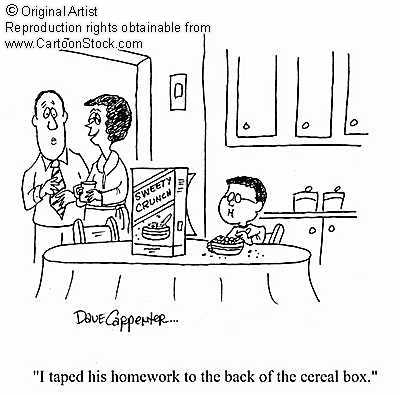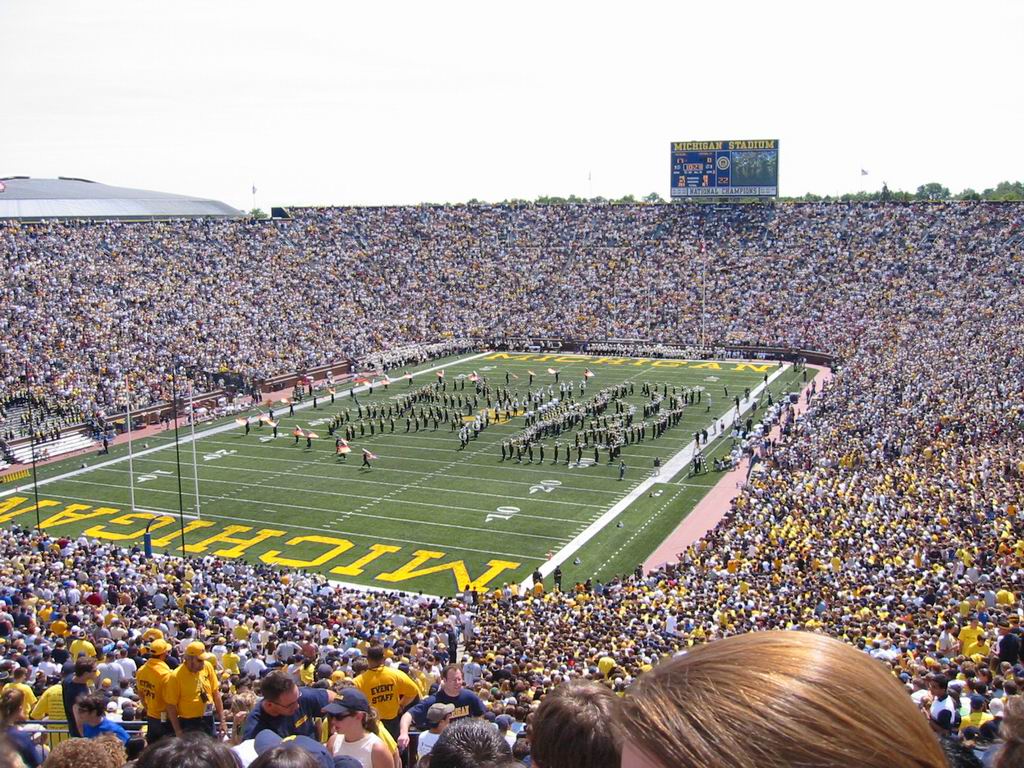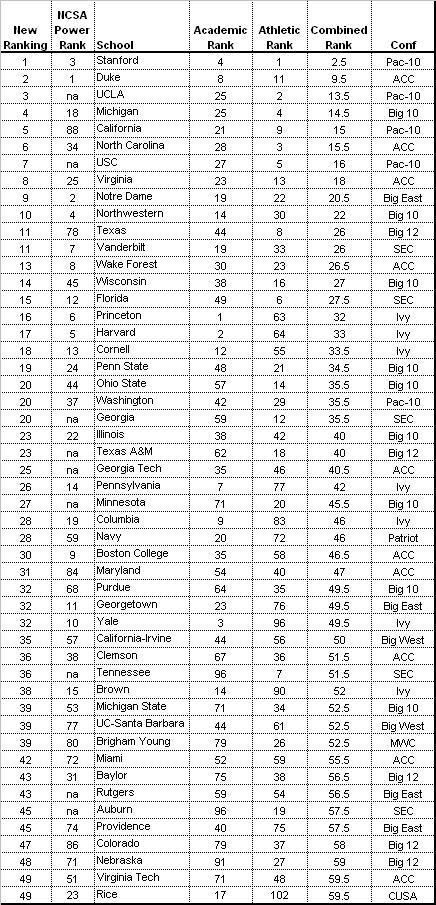Posted by rtmsf on November 10th, 2008

Rob Dauster of Ballin is a Habit is the RTC correspondent for the Big East Conference.
Predicted Order of Finish (from the coach’s pre-season poll, released at Big East media day):
- Connecticut (9)
- Louisville (3)
- Pitt (3)
- Notre Dame (1)
- Villanova
- Marquette
- Georgetown
- Syracuse
- West Virginia
- Providence
- Cincinnati
- Rutgers
- Seton Hall
- St john’s
- DePaul
- South Florida

WYN2K. You hear that? You know what that is? That’s the sound of RTC stealing my thunder. I’m not much of a statistician myself, but just by looking at that pre-season poll I can tell you this – the Big East is loaded. If you live outside of Big East country, then you are probably sick of hearing about how good the conference is, year in and year out. But facts are facts. Four teams are legitimate Final Four threats. Another six teams are, depending on who you ask, expected to be a part of the 65 team field. Three more teams have an outside shot at punching a ticket to the dance if they can catch a few breaks (transfers getting cleared, freshman getting eligible, etc.). So in this day and age of college basketball, where “early entry,” “parity,” and “mid-major” have become household terms, how did one conference manage to stockpile so many good teams? Well, as you can see, the Big East is HUGE. There are sixteen teams spanning from Rhode Island to Wisconsin to Florida and everywhere in between. When you have that many teams in one conference, there are bound to be years where there are a lot of good teams, especially when so many of the schools have a rich basketball tradition. This just happens to be one of those years where the Big East got lucky. Last season, 32 players were named to an All-Big East team (1st, 2nd, honorable mention, all-rookie), and only two of those players (WVU’s Joe Alexander and Syracuse’s Donte Greene) declared for the draft with eligibility remaining. Would Pittsburgh be as good as expected if Sam Young left? What about UConn without Hasheem Thabeet? Those two, and a number of other players, probably would be on NBA rosters right now if they left, but for whatever reason (a loaded draft class last year, smarts enough to know they weren’t ready, boosters offered them more than what they would get paid on a rookie’s salary) they decided to head back to campus.
So without further ado, here is your conference breakdown:
Cellar Dwellars. DePaul, St. John’s, South Florida, Rutgers
- There are some talented players on these teams. Sophomore Dar Tucker of DePaul is a poster waiting to happen. South Florida’s Dominique Jones scored 17.1 ppg as a freshman. St. John’s has senior Anthony Mason Jr. and sophomore Justin Burrell to carry the load. But with the depth of the Big East this year combined with the loss of some talented seniors, none of these three teams really look like they have a shot at doing much. Rutgers might have the best shot of the group to make some noise, as Fred Hill has landed back-to-back talented freshman classes. Don’t be surprised if you hear the names Gregory Echenique and Mike Rosario (RU’s first Mickey D’s all-american) quite often during the season.
We Should Have Bribed The NCAA. Cincinnati (NIT), Seton Hall (NIT)
- Both the Pirates and the Bearcats are awaiting the NCAA’s word on whether or not they will have some key players in their rotation. After struggling with the remnants of the Cincy program in the wake of Bob Huggins, Mick Cronin finally has the program heading in the right direction. He brings back Deonta Vaughn, who is one of the most explosive scorers in the country, and gets former Texas forward Mike Williams back from an Achilles injury. Adding two talented freshman in Yancy Gates and Cashmere Wright only helped matters. But Wright tore up his knee in the first week of practice, meaning that Vaughn is, once again, their only real backcourt threat and that they must rely heavily on their front line, which could be bolstered by the addition of 7’2” center John Riek. The Sudanese refugee, who was considered one of the best prospects in the country two years ago but has battled knee problems, is dealing with eligibility issues but could be in uniform by December.
- Seton Hall’s situation is a little different. The Pirates lose leading scorer Brian Laing (18.6 ppg) but return a solid nucleus of Eugene Harvey, Jeremy Hazell and John Garcia. Bobby Gonzalez had also hoped to add transfers Herb Pope (New Mexico St.) and Keon Lawrence (Missouri) without having to wait the mandatory one year for a transfer by having each kid apply for the NCAA’s hardship waiver. Pope’s been denied, Lawrence’s application will wait until after the first semester, and freshman Melvyn Oliver is still waiting to be cleared academically, meaning the Pirates currently have only eight scholarship players.
Pretenders or Contenders? Providence (NIT), West Virginia (NCAA #7)
-
I know what you’re thinking. Providence? Really, Rob? They haven’t been good since the days of Ryan Gomes and Donnie MacGrath (and even then, good might have been pushing it). But the Friars have the horses to sneak up on some people this year. They were as balanced as any team in the Big East last year, with six guys (five returners) that averaged at least 8.7 ppg. PG Sharaud Curry, arguably their best player, is back from a stress fracture in his foot and they have added Keno Davis, last year’s national COY at Drake, as the head coach. Davis should have some success in his first year with the Friars if they follow the same spread floor style that was so successful at Drake. One key reason for that is big man Geoff McDermott, who is adept at playing on the perimeter and is a stat stuffer (10 ppg, 8 rpg, 5 apg, 1 spg, and 1.5 bpg). Remember, this Providence team, who battled the injury bug all year, swept UConn and beat Temple and Arkansas last seaso. The talent’s there, but consistency and healthy players will be the key to their season.
-
The Mountaineers are a different story. They really came on towards the end of the season, thanks in (very) large part to the emergence of Joe Alexander, who was probably the best player in the conference (maybe the country) for the last month-plus of the season and is now a forward with the Bucks. Left are a bunch of very good role players that fit into Huggy Bear’s system and play hard. Guys like Joe Mazzula, Alex Ruoff and Da’Sean Butler. There are two major questions for the Mountaineers – who is going to play in the post and who is going to fill to void of “go-to guy” with Alexander gone. Freshman Devin Ebanks may be able to fill Alexander’s shoes with time, but the rest of the Mountaineers front line will be small (especially for the Big East) and inexperienced.
Worst of the Rest. Syracuse (NCAA #7), Georgetown (NCAA #7), Marquette (NCAA #6), Villanova (NCAA #5)
-
I’ll be completely honest with you. I’m a UConn fan. I hate Syracuse. Despise them. I even hate the color orange. I didn’t even rank them in my
top 25. Call it being biased, call it homerism, call it what you like. But I’ve had an epiphany – this team is really talented.
Jonny Flynn is one of the best point guards in the country.
Eric Devendorf is a very talented combo guard.
Andy Rautins can flat out stroke the three.
Paul Harris is a linebacker playing basketball. Arinze Onuake is a beast on the block. And this year, they actually have a deep bench filled with role players and hustle guys. They’re not quite in the top four, but Boeheim has himself his most talented team since Melo.
-
Georgetown lost a lot of very important players to graduation (Roy Hibbert, Jonathan Wallace, Patrick Ewing Jr) and transfers (Jeremiah Rivers, Vernon Macklin). They are left with just four guys who were in their rotation last year – guards Chris Wright, Jessie Sapp, Austin Freeman and forward DaJuan Summers. They do add a great recruiting class, headlined by big men Greg Monroe and Henry Sims, but it will still be somewhat of a rebuilding year for the Hoyas. Part of the reason is that John Thompson III may have to change up his style of play from the Princeton Offense. Hibbert, Wallace, and Ewing were perfectly suited to a slowed down game, where as Sapp and Wright are quick guards that can make plays in the open floor.
-
Marquette has a new coach, but they will be the same team. By now, you must know about their three great guards – Dominic James, Jerel McNeal and Wesley Matthews – who, when combined with Maurice Acker and David Cubillan, make up one of the deepest, most explosive backcourts in the country. But, much like Villanova and West Virginia, Marquette needs someone to step up inside. It’s great when you have a bunch of guards that can score and make plays, but will Dominic James 40” vert help him against the likes of Luke Harangody or DeJuan Blair? Dwight Burke is going to have to make some big strides as a senior, or else the Golden Eagles will have to rely on a freshman and two JuCo transfers inside.
-
Remember that Villanova team from a few years back? The one with Kyle Lowry, Randy Foye, Allan Ray and Mike Nardi? Well this ‘Nova team is going to be similar to that squad. Led by scoring machine Scottie Reynolds, ‘Nova has one of the best backcourts in the conference. But the key to their success this year will be the front court. Dante Cunningham, an athletic, 6’9 PF, has proven himself as a capable frontcourt player in the Big East, but the rest of the Wildcats frontline will need to step up if Jay Wright’s club wants to crack the top four.
Crème de la Crème. Notre Dame (NCAA #5), Pittsburgh (NCAA #3), Louisville (NCAA #2), UConn (NCAA #1)
-
Notre Dame returns basically the entire team that finished tied for second in the Big East, including reigning Big East player of the year Luke Harangody. While I can’t help but comment on his resemblance to a pot-bellied pig, you can’t argue with his production last year (23 ppg and 11 rpg in conference). While he is built like one of Charlie Weis’ lineman, he is actually incredibly nimble and has great feet and balance, which is one of the reasons he is able to scorer against bigger, more athletic defenders. Surrounding him will be shooters Ryan Ayers and Kyle McAlarney (who was a 1st team all-conference performer), as well as Tory Jackson, who is one of the more underrated PGs in the league. Notre Dame is going to be a fun team to watch if you like games with a lot of scoring and a lot of threes.
-
Pitt is going to be a typical Pitt team, with a lot of big, strong, tough kids that are going to play rugged, in your face defense. Sam Young, who developed a deadly jumper out to around the three point line, and DeJuan Blair, a 6’7 270-lb mammoth inside, provide one of the toughest frontcourts to match up with in the country. The biggest questions for Pitt surround their backcourt. When will Levance Fields return from foot surgery, and will he be healthy? Can anyone on this team replace the three point shooting of Ronald Ramon and Keith Benjamin?
-
Louisville, along with Pitt, is probably going to be the toughest defensive team in the conference. It starts with their backcourt, where they have five guys (Edgar Sosa, Andre McGee, Jerry Smith, Preston Knowles, Reginald Delk) that will really get after you on the perimeter. Earl Clark and Terrence Williams (who is coming off a torn meniscus and should be out another month or so) are both athletic, versatile players. T-Wills is more of a perimeter player and is the Cardinals best creator offensively, averaging more than 4.5 apg last year. Clark is more of a combo forward that will get his points off of fast breaks and cutting to the basket. Louisville loses their entire front line from last year, but they bring in a solid recruiting class, the star of which is Samardo Samuels, probably the best post recruit in America this year.
-
Last, but certainly not least, is
UConn. The Huskies probably won’t be at full strength until December, as
AJ Price is coming off of a torn ACL and freshman
Ater Majok and junior
Stanley Robinson (who was last
seen on a poster) are both going to be made eligible (hopefully) after the first semester ends. Regardless, UConn is loaded with talent. 7’3” junior and shot blocking machine
Hasheem Thabeet returns, as does
Jeff Adrien, the Huskies leading scorer and rebounder. Price will be joined in the backcourt by talented but troubled junior
Jerome Dyson and Mickey D’s all-american
Kemba Walker. UConn’s biggest question mark right now – can they win a big game? They were 8-8 on the road or on a neutral court last year, and are 0-3 in the Big East and NCAA tournaments the last two years.
RPI Boosters. The Big East RPI is going to be high enough, but here are some of the must-see non-conference match-ups (ignoring the possible match-ups in pre-season tournaments):
-
Wisconsin @ Marquette (12.06.08)
-
Villanova vs. Texas and Davidson vs. West Virginia in NYC at Jimmy V (12.09.08)
-
Cincinnati vs. Xavier (12.13.08)
-
Memphis @ Georgetown (12.13.08)
-
Marquette @ Tennessee (12.16.08)
-
Gonzaga vs. UConn in Seattle (12.20.08)
-
Syracuse @ Memphis (12.20.08)
-
Kentucky @ Louisville (01.04.09)
-
Georgetown @ Duke (01.17.09)
-
Notre Dame @ UCLA (02.07.09)
65 Team Era. The Big East earned its chops as a basketball conference in the 80s, and that tradition persists to this very day despite the expansion of the league to it’s current sixteen-team iteration. Last year the league earned eight bids to the NCAAs, and it’s difficult to envision a future scenario where the conference would ever get less than six bids again. This obviously will skew their future numbers on a whole scale, but their stats to date are nothing to sneeze at (206-126, .620, 11 F4s, 4 titles). With the power at the top of this year’s league, we could potentially see another 1985 F4 on the horizon (3/4 of the F4 were Big East teams – Villanova, Georgetown, St. John’s).
Final Thought. The Big East is wide open this year. Every night is going to be a dog fight. One thing you can be sure of, however, is that any team from this league that makes it to the postseason is going to be battle-tested.
| 2008-09 preview
| Tagged: aj price, alex ruoff, andre mcgee, andy rautins, anthony mason jr, ater majok, austin freeman, bob huggins, bobby gonzalez, brian laing, cashmere wright, chris wright, cincinnati, connecticut, dajuan summers, dante cunningham, dasean butler, david cubillan, dejuan blair, deonta vaughn, depaul, devin ebanks, dominic james, dominique jones, donte greene, dwight burke, earl clark, edgar sosa, eric devendorf, eugene harvey, fred hill, geoff mcdermott, georgetown, greg monroe, gregory echenique, hasheem thabeet, henry sims, herb pope, jamie dixon, jay wright, jeff adrien, jerel mcneal, jeremy hazell, jerome dyson, jerry smith, jessie sapp, jim boeheim, Joe Alexander, joe mazzula, john garcia, john riek, john thompson III, jonny flynn, justin burrell, kemba walker, keno davis, keon lawrence, kyle mcalarney, levance fields, louisville, luke harongody, marquette, maurice acker, melvyn oliver, mick cronin, mike rosario, mike williams, notre dame, paul harris, pittsburgh, preston knowles, providence, reginald delk, rick pitino, rutgers, ryan ayers, sam young, samardo samuels, scottie reynolds, seton hall, sharaud curry, south florida, st johns, stanley robinson, syracuse, terrence williams, tory jackson, villanova, wesley matthews, west virginia, yancy gates
Share this story




















































